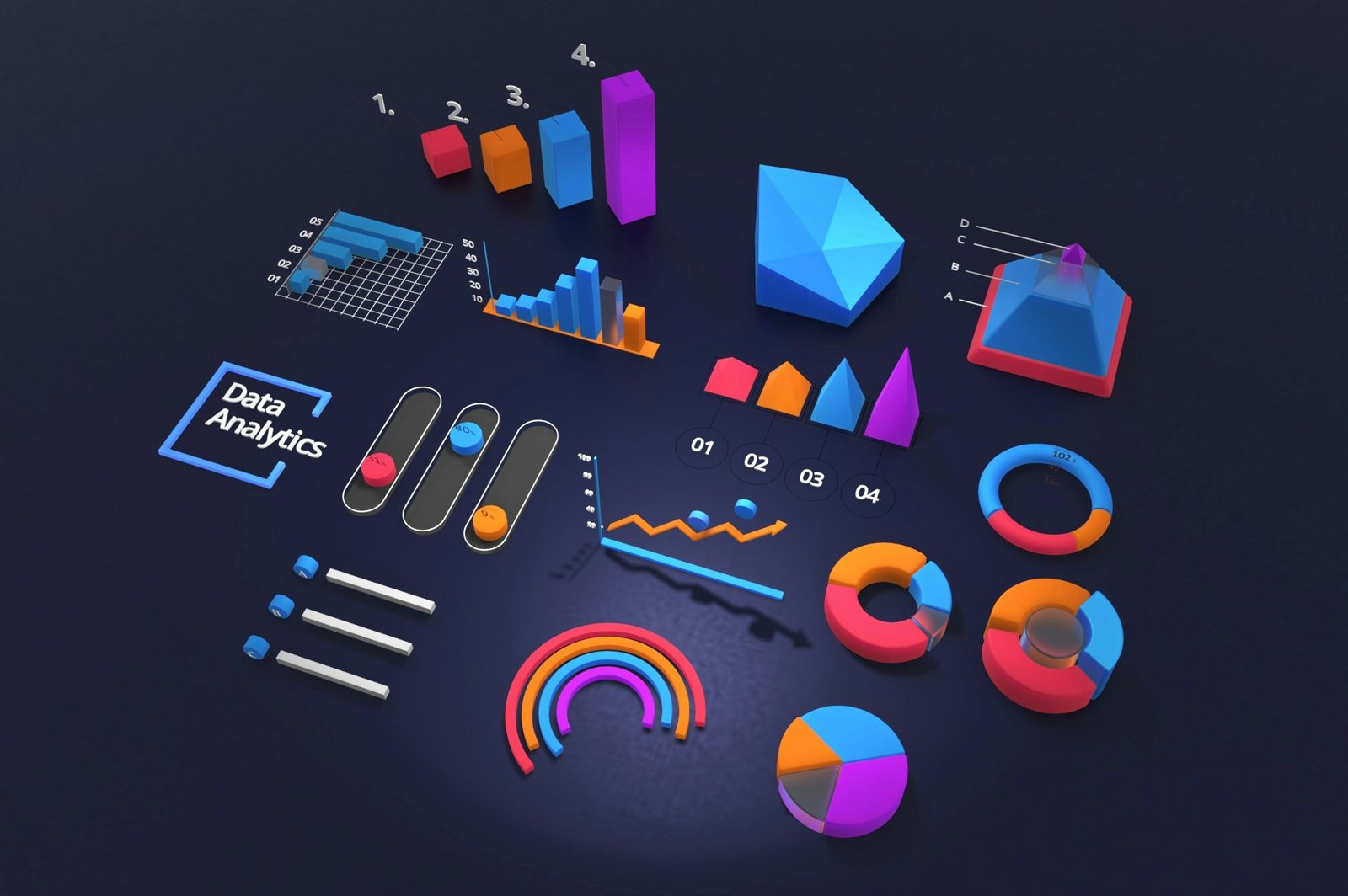
Data analytics refers to the systematic computational analysis of data to discover patterns, trends, and insights that inform decision-making. In education, it has become an invaluable tool that enables educators and administrators to make data-informed choices that enhance student performance. With the rise of digital learning platforms and the growing availability of student data, the application of analytics in education has never been more crucial. Data Analytics in Education
By leveraging data analytics, educational institutions can utilize vast amounts of information, ranging from academic performance records to demographic data. This analysis helps identify strengths and weaknesses in student performance, fostering a more personalized learning experience. For instance, analyzing test results and coursework submissions helps educators pinpoint areas where students struggle, allowing timely interventions tailored to individual needs.
Data analytics also optimizes teaching methodologies and enhances curriculum development. By understanding students’ specific learning styles and preferences, educators can adapt their instructional approaches to promote engagement and motivation in the classroom. Furthermore, analyzing enrollment trends and student success rates helps institutions allocate resources more effectively, ensuring support services are directed where they are most needed.
In this dynamic educational landscape, data analytics is not just a tool; it is a catalyst for transforming how educational institutions approach teaching and learning. As we explore various aspects of data analytics in the following sections, we will highlight how effective data use can significantly contribute to improved educational outcomes and a more inclusive learning environment.
Understanding Student Performance Metrics
Understanding student performance metrics is essential for fostering academic success and guiding improvement strategies. Key performance indicators (KPIs) commonly used to measure academic achievement include grades, attendance records, engagement levels, and standardized test scores. Each of these metrics plays a significant role in providing a comprehensive overview of a student’s educational journey.Data Analytics in Education
Grades are the most recognizable performance metric, reflecting students’ understanding and competency in coursework. They provide immediate feedback on performance and motivate students to maintain or improve their academic standing. Attendance serves as a crucial indicator of student engagement and commitment to learning. Regular attendance often correlates with improved academic outcomes, as consistent participation in class allows students to absorb material and engage in discussions.
Engagement levels, including classroom participation, homework completion, and social interaction with peers, indicate a student’s interest and investment in their education. High engagement levels typically correlate with better performance, as engaged students are more likely to absorb information and seek help when needed. Standardized test scores serve as objective measures of student performance, allowing educators to compare proficiency across different schools and districts. These tests can also identify learning trends and areas where students may require additional support.
Collectively, these performance metrics provide educators with vital data to interpret student success and pinpoint areas needing improvement. By effectively gathering and analyzing these metrics, educational institutions can devise targeted interventions to enhance student performance, leading to better learning outcomes.
Collecting and Managing Educational Data
Effective collection and management of educational data are crucial in today’s educational landscape. Various methodologies and tools have been developed to gather insights from multiple sources, providing a comprehensive view of student performance. Learning Management Systems (LMS) play a pivotal role, as they facilitate online learning and track student engagement and performance metrics. Platforms like Moodle and Canvas enable educators to access a wealth of data on how students interact with course materials, informing their assessment of learning outcomes.
Additionally, Student Information Systems (SIS) serve as repositories for essential student data, including enrollment records, grades, and attendance. By leveraging SIS, educational institutions maintain an organized database capturing crucial metrics necessary for evaluating academic progress and guiding administrative decisions. Incorporating feedback surveys also provides qualitative data that illuminates student perceptions and experiences. These surveys help educators understand the effectiveness of instructional strategies and identify areas for enhancement.
Prioritizing data quality and integrity is imperative despite the numerous sources of educational data. Collecting accurate and reliable data elevates the educational experience and fosters trust among students and parents. As schools and universities increasingly focus on data-driven decision-making, adhering to ethical guidelines regarding data privacy becomes paramount. Institutions must comply with legal requirements, such as FERPA in the United States, which safeguards student information and ensures consent is obtained when necessary. Such measures are vital for maintaining the confidentiality and security of sensitive data, fostering a safe and constructive learning environment.Data Analytics in Education
Analyzing Data for Insights on Student Learning
Data analytics serves as an indispensable tool for understanding student learning outcomes. Various analytical techniques derive meaningful insights from collected data, enhancing student performance. Descriptive analytics summarizes historical data to identify trends and patterns. For example, educators can review test scores across different cohorts to recognize areas needing improvement. By analyzing this data, educators make informed decisions that tailor instruction to better meet students’ needs.
Predictive analytics utilizes historical data to forecast future student performance. This technique employs statistical models and machine learning algorithms to identify at-risk students based on indicators like attendance and engagement metrics. By leveraging predictive analytics, educational institutions can intervene proactively before students face significant challenges. For example, universities successfully identify freshmen who may struggle academically, allowing timely support measures to enhance overall retention rates.
Prescriptive analytics builds upon descriptive and predictive analytics by recommending specific interventions or strategies to improve student performance. This technique enables educators to simulate various scenarios and assess the potential impact of different approaches. For instance, schools that utilize prescriptive analytics design customized learning plans for individual students based on their unique data profiles. By identifying effective intervention strategies tailored to each student’s needs, educators can significantly enhance learning outcomes.
Real-life examples of successful analysis in education underscore the transformative power of data. By combining descriptive, predictive, and prescriptive analytics, educational stakeholders gain a comprehensive understanding of student learning processes, leading to improved educational practices and enhanced student performance. Data Analytics in Education
Implementing Data-Driven Interventions
Data analytics is a powerful tool for educators seeking to enhance student performance through informed decision-making. By leveraging insights from student data, educators design and implement targeted interventions that address individual learning needs. Academic support initiatives form the foundation of these interventions, enabling institutions to identify struggling students and provide additional resources tailored to their specific challenges.
One effective approach is creating personalized learning plans that allow educators to track student progress in real time. By evaluating strengths and weaknesses based on various data points, such as assessments and participation levels, educators can customize the learning experience. For instance, students excelling in certain areas may benefit from advanced coursework, while those struggling can receive remedial assistance, fostering an inclusive learning environment.
Targeted teaching methodologies also play a crucial role in implementing data-driven interventions. Educators can adopt differentiated instruction strategies that cater to diverse learning preferences in the classroom. For example, using data to inform group assignments allows for collaborative learning among peers with similar skill sets while enabling teachers to provide individualized feedback. This approach enhances student engagement and promotes an environment where all learners can thrive.
By consistently evaluating and adjusting these interventions based on ongoing data analysis, educational institutions can achieve significant improvements in learning outcomes. Ultimately, data-driven interventions empower educators to make informed decisions that enhance student performance, ensuring educational equity and success for every learner.
Monitoring Progress and Adapting Strategies
Monitoring student performance and adapting strategies are vital components in the pursuit of academic success. Continuous assessment helps educators gauge the effectiveness of interventions and provides insights into each student’s unique learning trajectory. By utilizing various tools and methods for tracking progress, educators can effectively respond to changing needs and support each student in reaching their potential.
Learning management systems (LMS) and data analytics platforms play an instrumental role in monitoring progress. These systems aggregate information on student performance, enabling educators to visualize trends and patterns over time. Dashboards display metrics such as grades, attendance rates, and engagement levels, allowing for informed decision-making. Additionally, formative assessments, quizzes, and surveys provide immediate feedback, facilitating real-time adjustments to teaching methodologies.
Establishing clear benchmarks and performance indicators is another significant aspect of monitoring. By setting specific goals for each student and regularly evaluating their progress, educators can identify areas for improvement and highlight achievements. This process fosters a growth mindset among students and encourages them to take ownership of their learning journey.
Flexibility is essential for effective data-driven strategies. As new data insights arise, educators must adapt their teaching methods and interventions. This responsiveness ensures that educational approaches remain aligned with students’ evolving needs. Strategies that proved effective in one context may require modification based on fresh data, enhancing the likelihood of success. By embracing a culture of continuous improvement, educational institutions can cultivate a personalized learning environment conducive to student achievement.
The Role of Educators in Data Analytics
Educators play a pivotal role in harnessing data analytics to enhance student performance. As data becomes integral to educational strategies, teachers must be trained as data-informed decision-makers. Professional development opportunities focusing on data analytics can equip educators with the necessary skills to interpret and utilize data effectively in their classrooms. Data Analytics in Education
Training programs should emphasize technical aspects of data analytics and the pedagogical implications of data interpretation. Educators must learn to distinguish between different data types, such as formative and summative assessments, and recognize how each can provide insights into student learning and engagement. By transforming raw data into actionable insights, teachers can tailor instructional strategies to meet diverse student needs, fostering a conducive learning environment.
Collaboration between educators and data analysts is another critical component of this process. When data specialists work alongside teachers, they provide valuable support in data interpretation and application. This partnership ensures that teachers understand the data and can draw meaningful conclusions that positively impact classroom practices. Effective communication between these professionals enables the seamless integration of data analytics into the educational framework.
Furthermore, educators must interpret data meaningfully within their classrooms. This requires a critical understanding of specific student populations and how socio-economic and cultural factors influence learning outcomes. By contextualizing data, educators can implement targeted interventions that are relevant and timely, better supporting student success.
Ultimately, empowering educators through data analytics training and collaboration is essential. As they become proficient in utilizing data to inform their teaching practices, the potential for enhanced student performance becomes increasingly attainable.
Challenges and Limitations of Data Analytics in Education
Integrating data analytics in education presents numerous opportunities to enhance student performance, but it comes with challenges and limitations. One primary obstacle is data overload.



